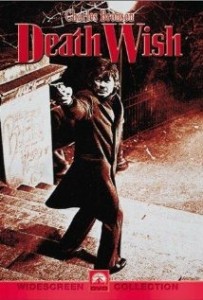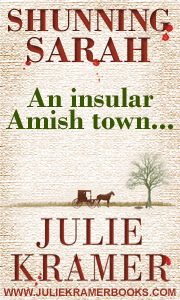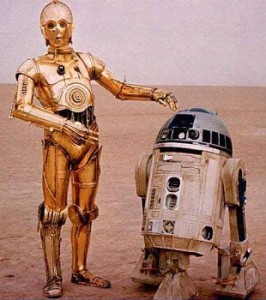By Joe Moore
How often do you watch a movie with the sound turned off? Not too often, I’ll bet. Not only would you be missing a key sensory ingredient of the story, but you would have to guess at what is motivating the characters actions. Without the sound or dialogue, motivation is vague, ambiguous, and downright impossible to determine. And without motivation, there’s little or no story to enjoy.
Motivation directs a character’s actions and reactions. When someone reads a book, they rarely go digging for motivation, but they know when it’s missing, or worse, when it’s present but farfetched or forced. For instance, motivation becomes unbelievable when it’s cliché such as the old, worn out white hat-black hat characterization. The bad guy must be bad because his appearance is that of a stereotypical villain.
Another stumbling point is when the protagonist’s actions go beyond the realm of reality to the point of stopping the reader cold. The motivation didn’t provide the justification on why a character acts in a certain manner. This is critical when a character, especially the hero, deliberately risks his own life. If the motivation hasn’t been sold to the readers in a convincing manner prior to the protagonist taking a dangerous risk, they won’t buy into the scene and will consider it manufactured. That’s where they stop reading and put the book down.
A character’s motivation can be an obvious goal that must be achieved in order for survival or it can be a series of ever-building events that propel her forward into an inevitable conflict. It’s the writer’s job to develop motivation to a point that the reader won’t question the character’s actions, especially by the time they reach the climax of the book.
First, let’s talk about external motivation: incidental versus major.
Incidental motivators are the events that occur in and around the character at the scene or setting level of the story. He’s late for work. She’s annoyed by the neighbor’s barking dog. He spills his coffee on his business report. She has an argument with her mother. He gets cut off in traffic. She loses her earring. In and of themselves, these incidental events don’t motivate the hero to run into a burning building to save a stranger or the heroine to spend years tracking down the murderer of her child. But they all add up—or at least they should. They are the bricks and cement of character-building that must augment and support the grand motivation that kicks off the story—the major motivation.
Major motivation is the biggie. A great example is the Death Wish scenario—the classic 1974 Charles Bronson movie. An ordinary guy becomes a one-man vigilante  squad after he witnesses his wife murdered by hoodlums. The major motivation—the brutal crime and ensuing obsession for vengeance—shapes and forces the character into taking action outside his comfort zone. And because he’s such a “Mr. Everyman”, the reader will probably consider what he or she would do in the same situation. The protagonist gets sympathy and support from the reader even though he’s committing acts of violence just as extreme as the original major motivation.
squad after he witnesses his wife murdered by hoodlums. The major motivation—the brutal crime and ensuing obsession for vengeance—shapes and forces the character into taking action outside his comfort zone. And because he’s such a “Mr. Everyman”, the reader will probably consider what he or she would do in the same situation. The protagonist gets sympathy and support from the reader even though he’s committing acts of violence just as extreme as the original major motivation.
Another factor in believable character motivation is matching the actions of the protagonist with his personality—an internal motivation. A 95-pound, soft-spoken computer geek shouldn’t try to physically take on the 330-pound former linebacker henchman in a fist fight. But he can use his fine-tuned intellect and problem solving abilities to bring down the bad guy in the arena of the brain, not brawn. The actions of the character fueled by motivation must be consistent with his personality. This is not to say that an ordinary guy can’t take on an extraordinary situation and win, only that it must be consistent with his makeup and therefore believable in the mind of the reader.
There’s also the internal issue of motivational growth. The protagonist should grow or change in some manner over the course of the story. And this growth must be the result of internal forces in opposition. For example, greed and generosity, anger and patience, or caution and boldness. The protagonist is a highly cautious individual and shows it while reacting to a number of incidental events. But when the major event comes along—perhaps a direct threat to his family’s safety—he steps forward to become a bold defender of what he treasures most.
When dealing with motivation, we can’t forget that the antagonist needs his share, too. It’s a given that conflict and tension are what keeps a reader turning pages. So not only does the protagonist need the appropriate amount of convincing motivation to be propelled through the story, but the antagonist must meet the challenge with an equal amount of motivation to push back. It’s not good enough to say that the bad guy is insane or wants to rule the world. There has to be motivation that is undeniable in the mind of the reader.
Finally, to create strong, believable motivation for your characters, remember to always ask yourself, How would I react in a similar situation?
===============
THE BLADE, coming in February from Sholes & Moore
"An epic thriller." – Douglas Preston
"An absolute thrill ride." – Lisa Gardner
”Full-throttle thriller writing.” – David Morrell
"Another razor-sharp thriller from one of my favorite writing teams." – Brad Thor
"History and suspense entangle from page one." – Steve Berry





